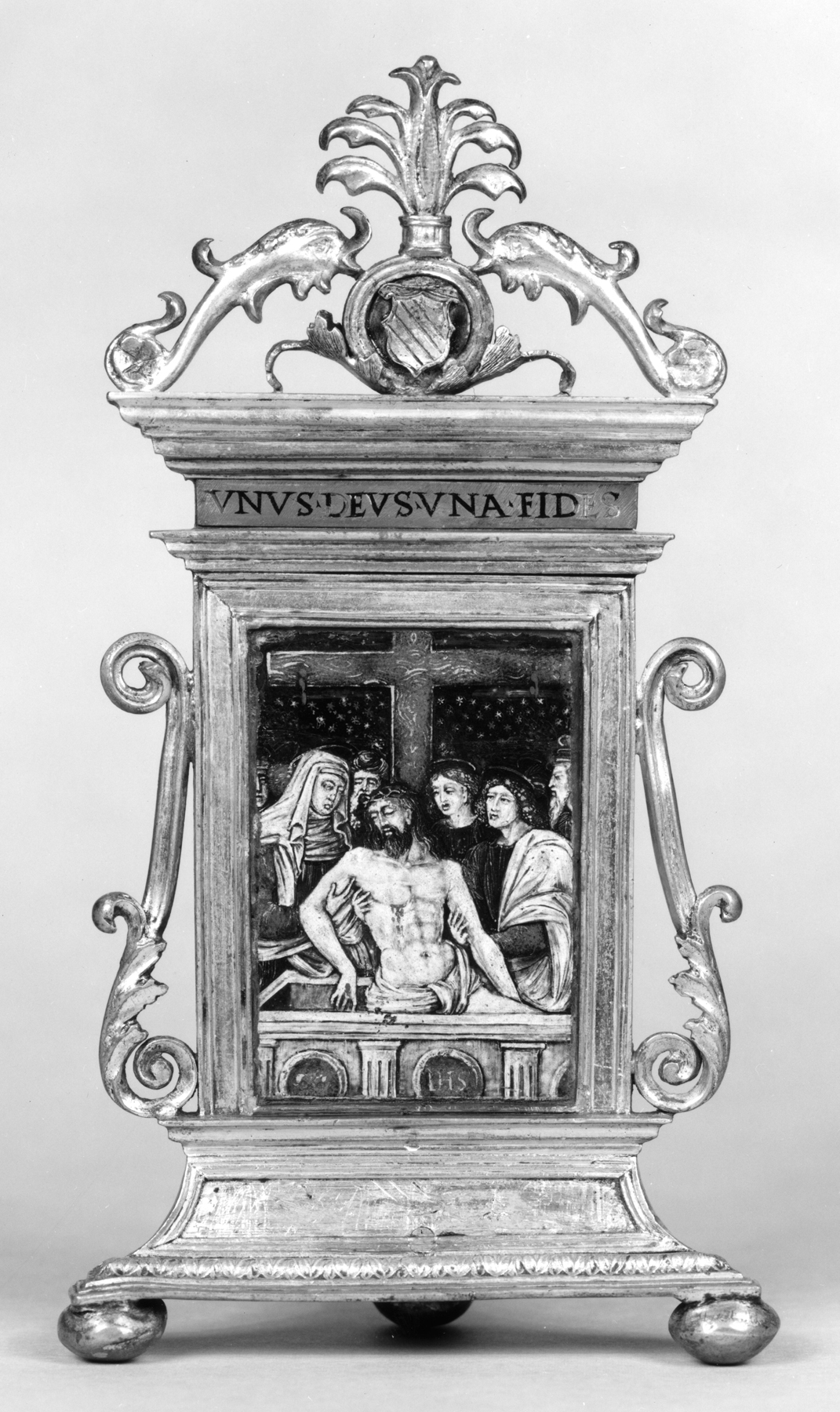Christ in the Tomb
(Renaissance Europe )
This copper gilt pax is set with a rectangular plaque of copper enameled with a representation of the Pieta. In the scene, the dead body of Christ is supported in half-upright position in the tomb by the Virgin and St. John, surrounded by the weeping Magdalene, Joseph of Arimathea, Nicodemus and another figure half concealed by the border on the left. Behind the Pieta the cross looms before a star-spangled sky. The tomb, a marble sarcophagus, is ornamented with three discs of porphyry, the central one inscribed in gilding: IHS.
The composition derives essentially from a bronze plaque after Moderno, of which there is an excellent example in an early state at our institution, Walters 54.69.
Inscription
Provenance
Provenance (from the French provenir, 'to come from/forth') is the chronology of the ownership, custody, or location of a historical object. Learn more about provenance at the Walters.
Seligmann, Paris [date and mode of acquisition unknown]; Henry Walters, Baltimore, 1906, by purchase; Walters Art Museum, 1931, by bequest.
Geographies
Italy, Venice
(Place of Origin)
Italy, Lombardy (Place of Origin)
Measurements
Pax H: 7 1/2 x W: 4 in. (19 x 10.2 cm); Plaque H: 2 3/4 x W: 1 15/16 in. (7 x 4.9 cm)
Credit Line
Acquired by Henry Walters, 1906
Location in Museum
Not on view
Accession Number
In libraries, galleries, museums, and archives, an accession number is a unique identifier assigned to each object in the collection.
In libraries, galleries, museums, and archives, an accession number is a unique identifier assigned to each object in the collection.
44.125



